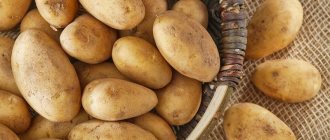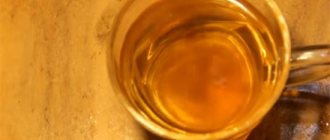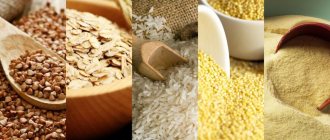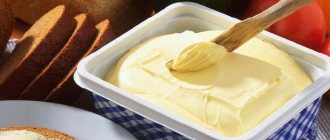Types and composition of sesame
A type of annual herbaceous plant of the genus Sesame.
Small sesame seeds are used to prepare kozinaki and halva, sauces and pastes, and as an additive to baked goods. The seeds contain a large amount of fatty acids; oil is extracted from them, used in cooking, medicine and cosmetology. Externally, sesame varieties differ in color. Seeds can be white, brown, black, yellow. Basically, the color depends on the method of grinding and heat treatment. Black sesame is a raw seed, white sesame is ground and peeled. As a result of roasting, the white seed acquires a golden or brown hue.
Sesame seeds are rich in fat, which determines the high calorie content of the product (about 560 kcal per 100 g). However, the oil contained in abundance in sesame is represented by unsaturated fatty acids, Omega-6, which have a beneficial effect on brain activity and the hormonal levels of a nursing woman. Sesame is rich in vitamins B1 and B2, which are involved in carbohydrate metabolism and protect against the formation of cholesterol plaques, improving liver function. Vitamin E is necessary for mother to maintain the beauty of the skin, ensure its firmness and elasticity. Vitamin PP is involved in the process of cleansing blood vessels and supports heart function.
The mineral composition of the product is unique, providing its beneficial properties for the well-being of a nursing woman and the healthy development of the baby. Sesame is especially notable for the presence of a large amount of calcium in its composition . The concentration of this microelement is higher than in any dairy product. This property is overshadowed by the fact that most of the calcium is contained in the seed coat, which is removed during grinding. The absorption of the mineral in the body is hindered by phytin and oxolates, which are also present in the composition, but are practically eliminated by heat treatment. But even these factors do not prevent sesame from being a source of large amounts of calcium.
Sesame is rich in magnesium and potassium, which are necessary for hematopoiesis and proper functioning of the heart, maintaining the elasticity of blood vessels and veins. In high concentrations, the product contains phosphorus and iron - valuable minerals for the development of tissues and organs of the baby, involved in the synthesis of amino acids, strengthening bone tissue.
Table: chemical composition and nutritional value
| Nutrient | Quantity | % of the norm in 100 g* |
| Calorie content | 565 kcal | 33.6% |
| Squirrels | 19.4 g | 25.5% |
| Fats | 48.7 g | 81.2% |
| Carbohydrates | 12.2 g | 5.8% |
| Alimentary fiber | 5.6 g | 28% |
| Vitamins | ||
| Vitamin B1, thiamine | 1.27 mg | 84.7% |
| Vitamin B2, riboflavin | 0.36 mg | 20% |
| Vitamin E, alpha tocopherol, TE | 2.3 mg | 15.3% |
| Vitamin RR, NE | 11.1 mg | 55.5% |
| Niacin | 4 mg | — |
| Macronutrients | ||
| Potassium, K | 497 mg | 19.9% |
| Calcium, Ca | 1474 mg | 147.4% |
| Magnesium, Mg | 540 mg | 135% |
| Sodium, Na | 75 mg | 5.8% |
| Phosphorus, Ph | 720 mg | 90% |
| Microelements | ||
| Iron, Fe | 16 mg | 88.9% |
| Fatty acid | ||
| Omega-6 fatty acids | 19.6 g | 116.7% |
| Monounsaturated fatty acids | 19.5 g | 100% |
| Polyunsaturated fatty acids | 19.6 g | 100% |
% of the norm in 100 g* - approximate values for a middle-aged nursing woman
What kind of plant is this
Sesame is an annual herbaceous plant from the oilseed family.
The second name of this plant is sesame. Its seeds have been used to produce oil since ancient times. The seeds are also actively used as seasonings and additives in various dishes. Baking with sesame seeds is especially popular in our country. These small aromatic seeds add a unique aroma and taste to buns and pies. Sesame grows in warm countries. The main supplier of sesame to the world market is Asia. The seeds contain vitamins, linoleic acids, zinc, calcium and antioxidants.
Benefits during breastfeeding
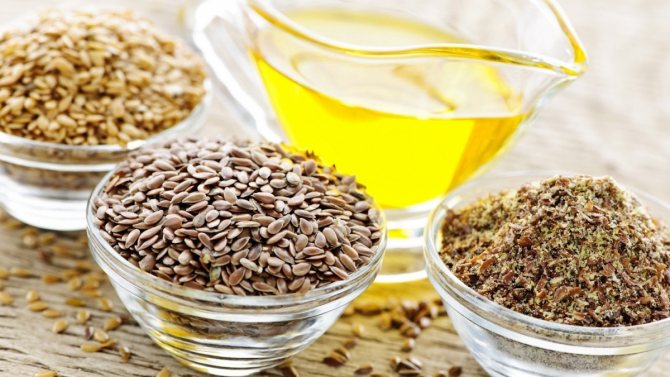
Sesame is especially valued by pediatricians for its richness in calcium. If a baby has lactase deficiency, when dairy products cause intolerance, sesame can be an excellent source of calcium for mother and child. It is also known about the ability of sesame to increase the fat content of breast milk and stimulate lactation. At the same time, the product has an anti-inflammatory effect on body tissues, reduces the risk of mastitis and lactostasis. Sesame has other benefits:
- Contains a large amount of fiber, helps prevent constipation and normalize digestion.
- Improves the functioning of the cardiovascular system due to the presence of niacin in the composition. This component prevents the deposition of harmful cholesterol on the walls of blood vessels.
- Vitamin PP and nicotinic acid ensure effective processing of fat in the body and participate in the synthesis of amino acids.
- Strengthens the immune system. The varied vitamin and mineral composition of the product has a restorative effect on the entire body as a whole.
- Improves the condition of joints, strengthens bone tissue. Calcium is necessary for the mother to maintain healthy teeth and bones, and for the baby to form a strong skeleton.
But there is not much calcium in milk; there is more of it in sesame and poppy seeds.
Marianne
https://www.babyblog.ru/user/id1517487/162057
If you don’t fry it, the taste is completely different, bitter, not very pleasant and not as bright as fried sesame. And it is crushed equally. By the way, Urbech made from sesame seeds is sold in health food stores. This is also a paste, like tahini, but it is made from raw sesame seeds. The taste is completely different, bitter and unpleasant :))
Katyusha Colobush
https://www.babyblog.ru/community/post/1_3_pitanie/1704733
Poppy and sesame seeds have a very strong milk extracting effect.
julia
https://www.babyblog.ru/community/post/breastfeed/1202531
Valuable oil
In addition to the seeds of the plant, mothers can eat sesame oil while breastfeeding. This valuable product, like seeds, contains a huge amount of vitamins and microelements. Vegetable salads are usually seasoned with oil.
Read also:
All about champignons during breastfeeding and the principles of tasty nutrition for a nursing mother.
In order to tidy up your hair after childbirth, you can make hair masks from sesame oil while breastfeeding. Such masks will quickly restore shine and vitality to weakened and brittle hair.
With regular use of sesame oil in women who are breastfeeding, hormonal levels are restored, the functioning of the gastrointestinal tract is normalized, and the functioning of the nervous and cardiovascular systems is normalized.
Also, consuming sesame seeds or oil has a beneficial effect on the baby’s nervous system. The child becomes calmer, sleep improves and anxiety goes away.
Possible harm and contraindications
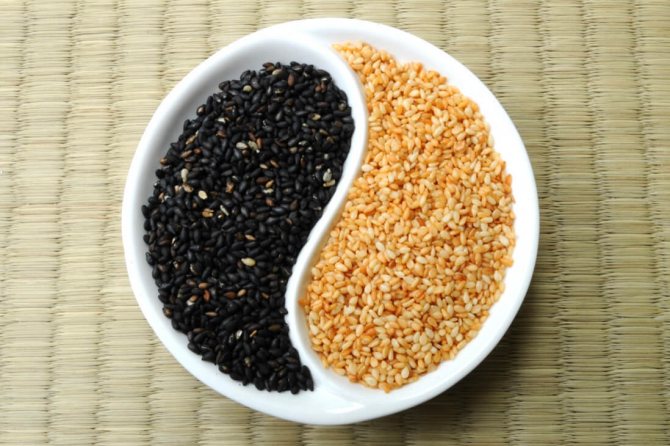
Sesame is considered a low-allergenic product and is usually well tolerated by mother and baby when properly included in the diet. However, sometimes sesame can cause problems with well-being. Contraindications to the use of sesame are:
- thrombophlebitis and increased blood clotting;
- individual intolerance to the product;
- allergy;
- digestive disorders or problems in the gastrointestinal tract;
- infant colic.
It is not recommended to eat sesame on an empty stomach, and you should not combine it with rhubarb or sorrel dishes. Organic acids contained in sour leafy vegetables impede the absorption and excretion of calcium and can provoke the deposition of salts in the bladder.
Rules for use during breastfeeding

During a long period of pregnancy and during breastfeeding, the body of a nursing woman actively consumed calcium.
To prevent the destruction of tooth enamel and the occurrence of joint problems, a woman needs to compensate for calcium loss. However, when taking synthetic drugs, there is a risk of too rapid hardening of the baby’s cranial bone and early closure of the fontanel on the head. This is fraught with increased intracranial pressure and other problems in the child. It is recommended to get calcium from food to avoid such problems.
Sesame will help the mother replenish calcium deficiency in the body and ensure uniform and proper strengthening of bone tissue and skeletal development in the baby. Follow the following rules for introducing sesame into your diet:
- The first try is allowed 3 months after birth in the morning;
- start with ½ teaspoon of seeds;
- if the baby does not react, the dose is increased gradually, bringing it to the daily norm (1 teaspoon);
- grains must be chewed thoroughly before swallowing to improve absorption;
- If a rash, redness of the skin or problems with the baby’s digestion appear, the product is excluded from the diet for 1 month.
Sesame oil is also appropriate in the diet of a nursing mother. The daily dose of the product is 20–30 g.
Benefits for mother and baby
Due to its high calcium content, sesame is able to replenish the reserves of this element in the body of a nursing mother. In addition, the child also needs calcium for normal growth and development. Sesame enriches breast milk with vitamins and minerals necessary for the full development of the baby.
Since ancient times, sesame has been used to remove age spots, strengthen hair and nails, and generally strengthen the immune system. Sesame seeds also cope well with constipation and cleanse the intestines.
How to select and store
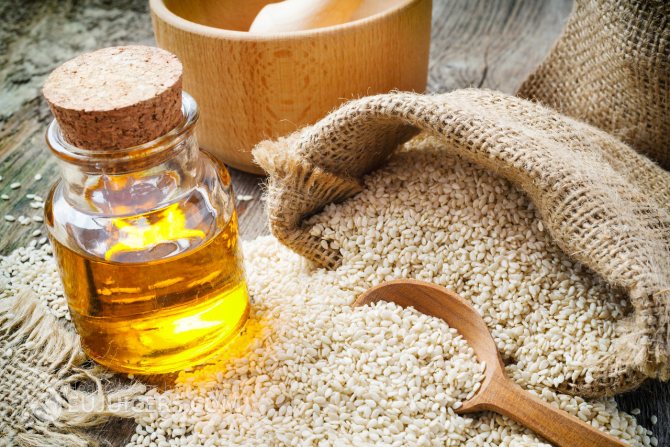
Fresh sesame seeds have a relatively short shelf life - no more than 3 months from the date of production. This is due to the high oil content in the composition, which goes rancid and oxidizes over time. Considering that a nursing mother is recommended to consume no more than 1 teaspoon of grains per day, purchasing sesame in large quantities is not advisable. Sesame is usually sold in the spice department or with nuts, by weight or in individual packaging. When choosing sesame, pay attention to the following details:
- the seeds are dry and crumbly, without lumps or signs of mold;
- the grains are pleasant to the taste, not bitter;
- The darker the sesame, the more nutrients it contains, so black grains are the most healthy.
It is recommended to store sesame seeds in a tightly closed container in a cool, dark place.
Sesame oil varies in color due to production processes. The light one is produced using cold-pressing technology - it has a mild taste and smell of sesame. Dark oil is obtained from roasted grains and has a distinct aroma and taste. The nutritional value of both types is quite high, but light, cold-pressed oil is more beneficial for nursing mothers. Sesame oil is a great dressing option for salads and appetizers. But heating it is strictly not recommended - the product loses its beneficial properties. Store the oil at room temperature until the expiration date indicated on the package.
Plant varieties
Most often we eat white sesame.
It is what is present in the buns, pies and bread that we buy. However, there is another variety of this plant - black sesame. What is the difference between these varieties of sesame? As studies have shown, the content of useful substances in black sesame is much greater than in white sesame. Such seeds will quickly saturate the body with calcium, vitamins D, E and A. If you prepare the seeds yourself, then black seeds need to be fried a little longer than white ones.
Read also:
Is it possible to have millet porridge while breastfeeding and why is it good?
Black sesame oil is also particularly valuable. It can be used both for food and as masks for hair and face.
Methods of use
Perhaps most consumers associate sesame with sprinkling on buns and confectionery products. Kozinaki and sesame halva are also world famous. In addition, a nursing mother can add sesame to:
- salads;
- breading for fish and meat;
- sauces;
- side dishes;
- pates and others.
Photo gallery: dishes with sesame

Sesame can be added to marinade or breading for meat

Sesame serves as a seasoning for side dishes and vegetable dishes
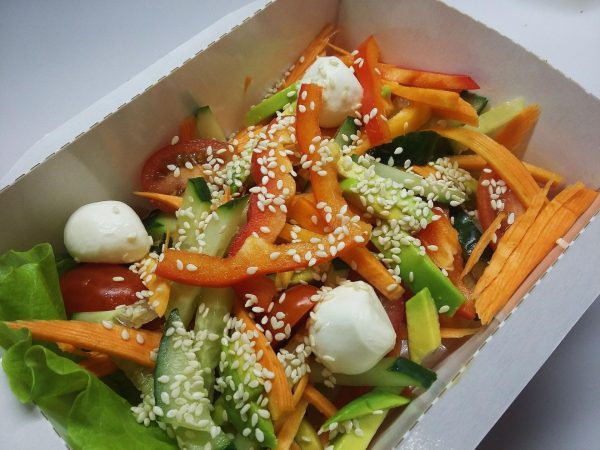
Sesame goes well with fresh vegetables and cheese
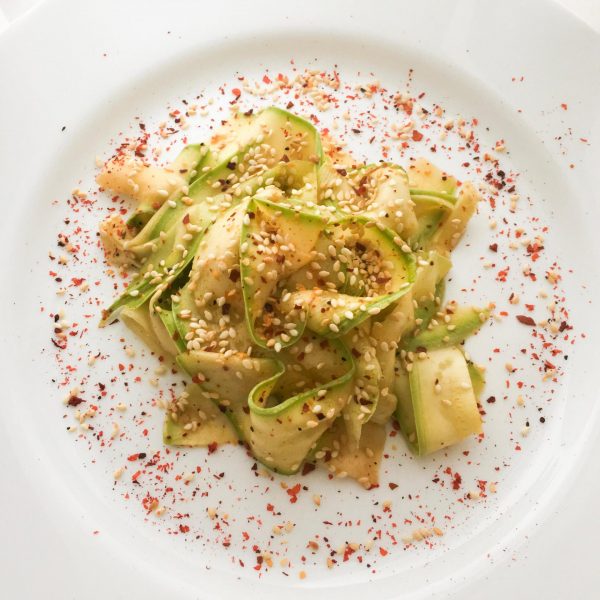
Sesame is a seasoning that gives snacks a special charm
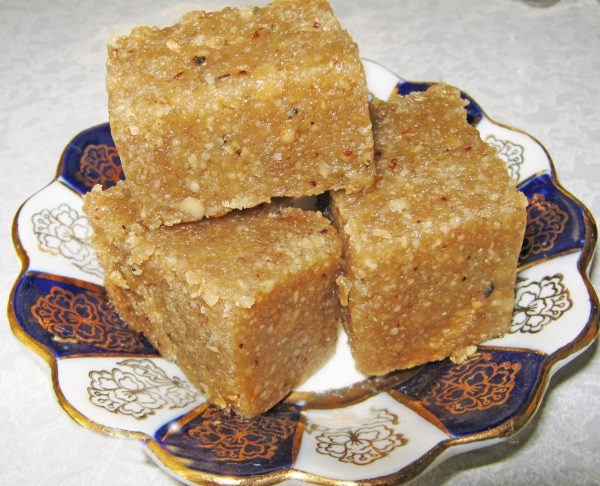
Sesame halva is called tahini

Oriental dish - hummus, chickpea and sesame paste
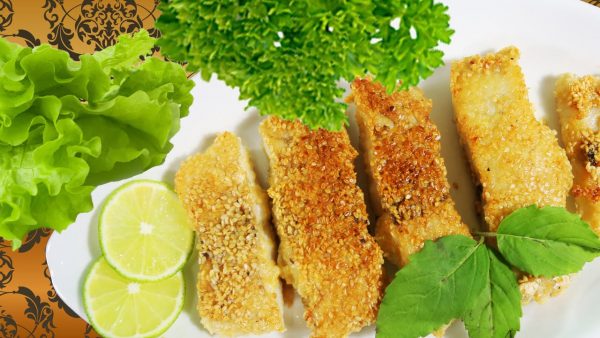
Sesame breading provides a crispy coating to fried fish fillets
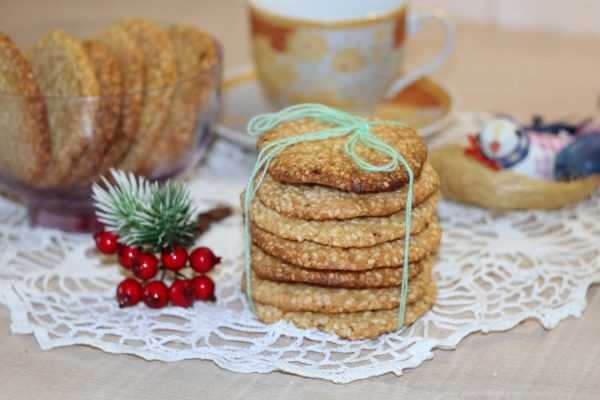
Sesame will enrich baked goods with dietary fiber and add a nutty taste.
Recipe: salad with feta, vegetables and sesame seeds
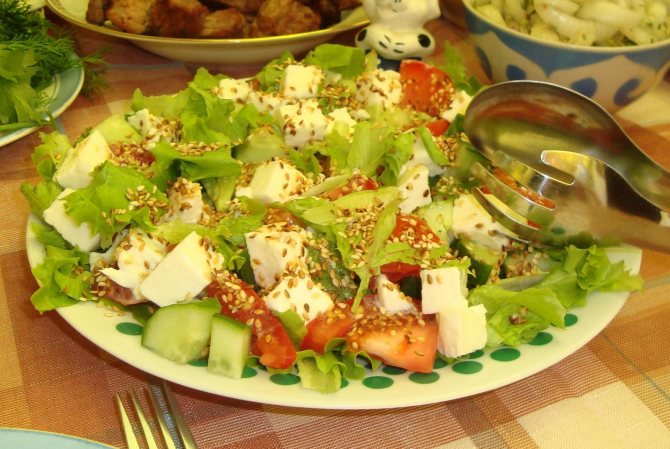
. Ingredients:
- feta cheese 200 g;
- fresh cucumbers 200 g;
- fresh tomatoes 200 g;
- lettuce 100 g;
- sesame 50 g;
- sesame oil for dressing.
Cooking process
- Cut the cheese into cubes.
- Wash cucumbers and tomatoes and cut into cubes.
- Tear the salad into fragments with your hands.
- Mix the ingredients and season with sesame oil.
- Sprinkle with sesame seeds before serving.
Recipe: kozinaki with sesame seeds

. Ingredients:
- sesame 200 g;
- honey 200 g;
- sugar 30 g;
- lemon ¼ pcs.
Cooking process
- Fry sesame seeds in a frying pan for 2 minutes.
- Mix honey, sugar, lemon juice, bring to a boil over low heat.
- Cook the syrup for 10 minutes, stirring.
- Mix the syrup with sesame seeds, pour into a flat bowl with sides and level.
- Leave to harden at room temperature for 3 hours.
- Cut into portions and serve.



